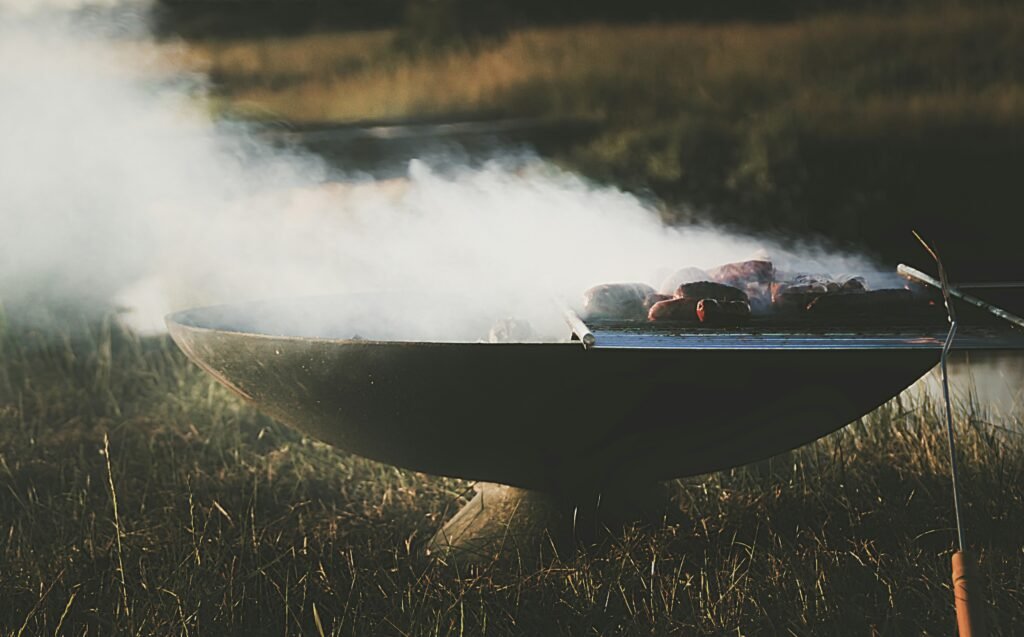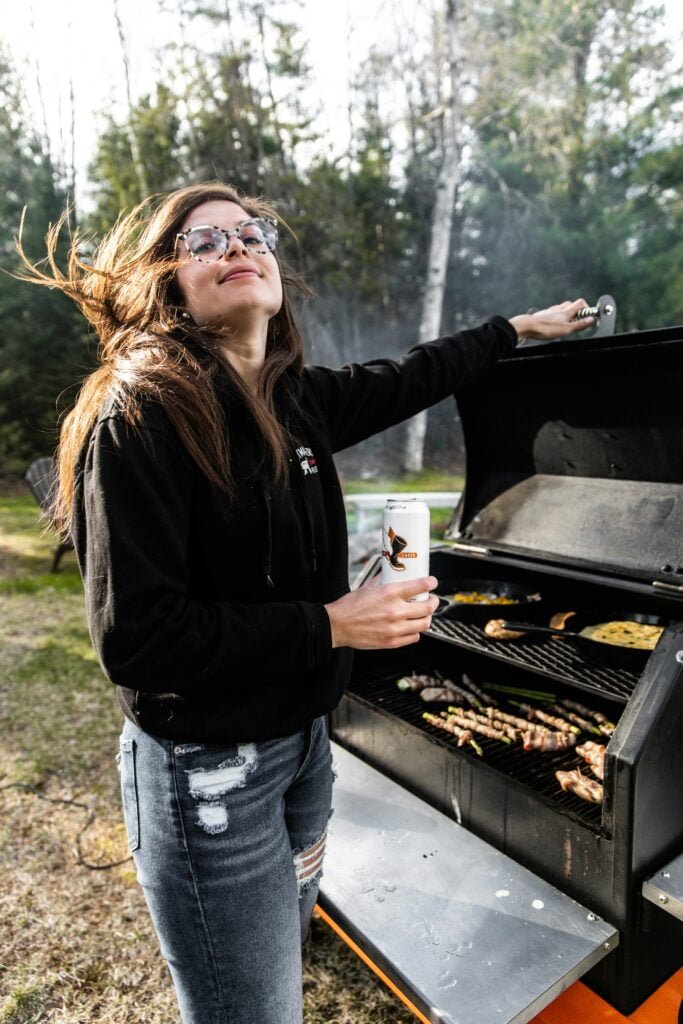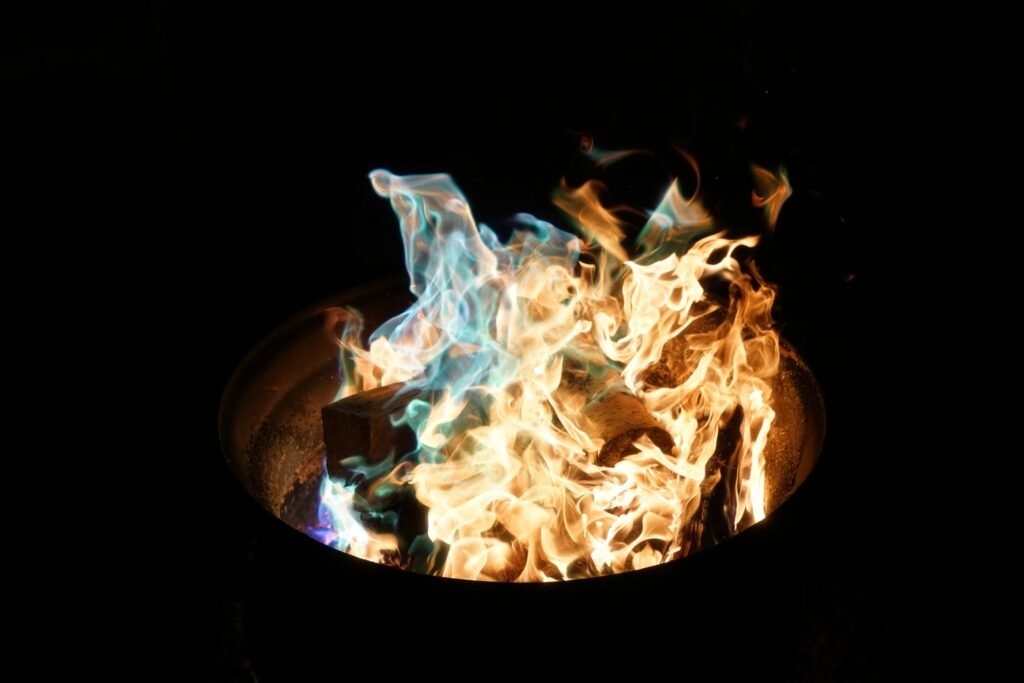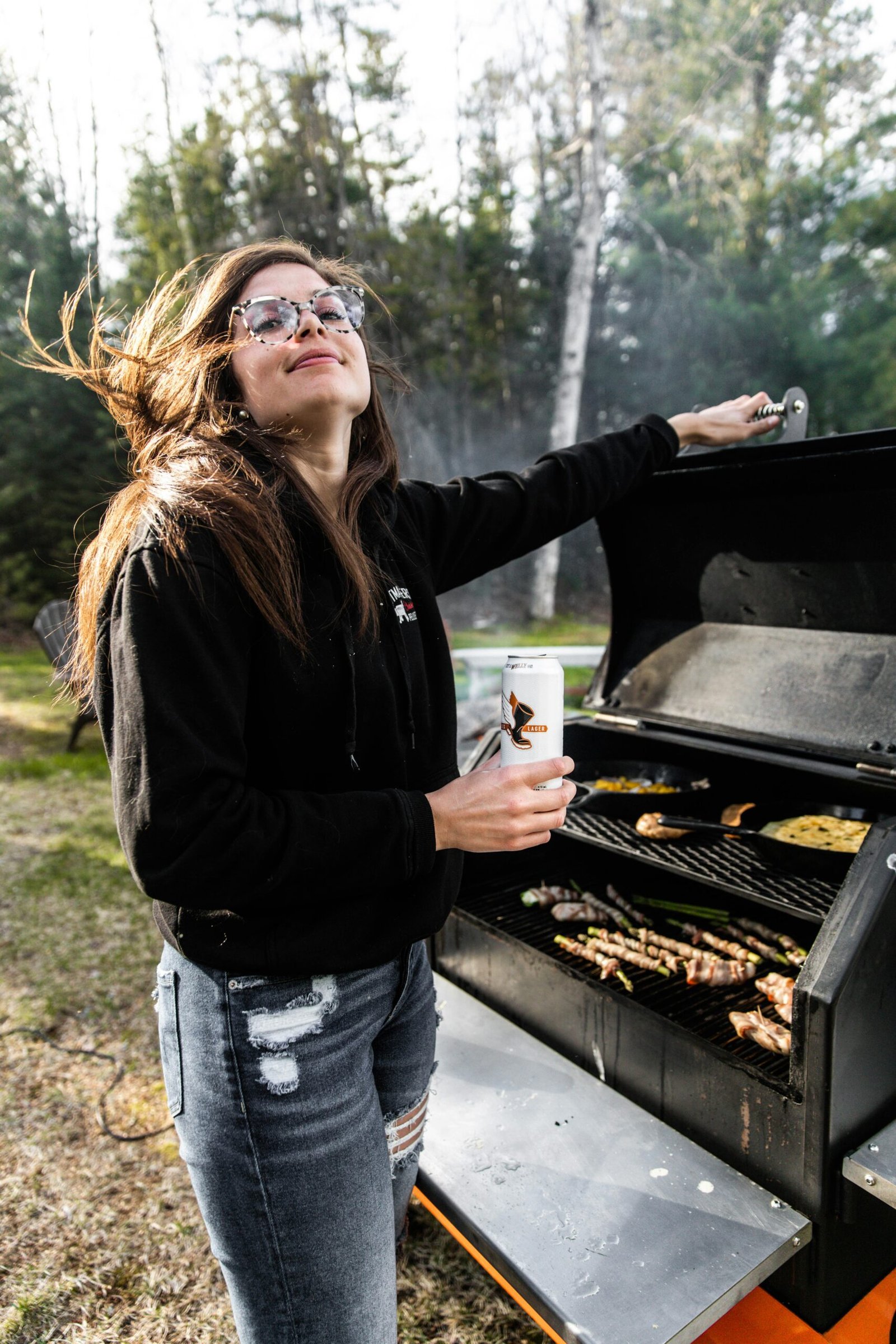Are you a BBQ enthusiast looking to up your grilling game? Understanding the difference between direct and indirect heat on a barbeque grill is key to achieving that perfectly cooked, mouth-watering meal. Direct heat involves placing your food directly above the flames, resulting in quick searing and a beautifully charred exterior. On the other hand, indirect heat involves placing your food away from the flames, using the grill’s lid to create an oven-like environment. This method is ideal for slow cooking larger cuts of meat, allowing them to cook evenly and retain their natural juices. So whether you’re aiming for a sizzling steak or tender smoked ribs, knowing when and how to use direct and indirect heat will elevate your grilling prowess to new heights.

Understanding Barbeque Grill Heat
Barbeque grilling is a popular cooking method that allows you to create delicious and flavorful meals. One crucial aspect of grilling is understanding how to control and utilize heat effectively. In this article, we will explore the difference between direct and indirect heat on a barbeque grill, their features, advantages, disadvantages, and how to choose the appropriate method based on your preferences and the food you are cooking.
What is direct heat?
Direct heat refers to the method of grilling where food is placed directly over the flame or heat source. The heat produced by the flame or heat source directly cooks the food, resulting in quick and intense cooking. When using direct heat, the food has direct contact with the heat, leading to faster cooking times.
What is indirect heat?
In contrast to direct heat, indirect heat grilling involves placing the food away from the flame or heat source. Instead of directly cooking the food, the heat is dispersed around the grill, creating a more gentle and uniform cooking environment. Indirect heat is best suited for larger, thicker cuts of meat and food items that require longer cooking times.
Heat control on a barbeque grill
Controlling the heat on a barbeque grill is essential to achieve the desired level of cooking. Most grills allow you to adjust the heat by regulating the flow of gas or adjusting the position of the charcoal briquettes. By mastering heat control, you can effectively utilize both direct and indirect heat methods for a wide range of dishes.
Features of Direct Heat
Direct heat grilling offers several unique features that make it suitable for certain types of food and cooking styles:
High heat
Direct heat grilling provides high temperatures, allowing you to quickly sear food and achieve a delicious caramelized exterior. The immediate contact with the flame or heat source intensifies the heat, resulting in a faster cooking process.
Used for quick grilling
If you’re looking for a speedy cooking method, direct heat grilling is the way to go. It is perfect for thin and small cuts of meat that cook quickly, such as hamburgers, hot dogs, and kebabs. The high heat ensures that these items are cooked through rapidly, making them ideal for casual gatherings or weeknight dinners.
Direct contact with flame or heat source
The defining characteristic of direct heat grilling is the direct contact between the food and the flame or heat source. This intimate connection intensifies the heat transfer, allowing the food to cook swiftly and efficiently.
Ideal for grilled food with less cooking time
Direct heat grilling is particularly suitable for food items that require less cooking time. The quick exposure to high temperatures ensures that the food is cooked to perfection without the risk of overcooking. It is perfect for achieving a quick and tasty meal.
Advantages of Direct Heat Grilling
Direct heat grilling offers a range of advantages, making it a popular choice for many grill enthusiasts:
Perfect for thin and small cuts of meat
Direct heat grilling is particularly well-suited for thin cuts of meat, such as steaks or chicken breasts. Due to the high temperatures and quick cooking times, these cuts of meat can be cooked to perfection without becoming excessively dry or overcooked.
Produces sear marks on the food
One of the most appealing aspects of direct heat grilling is the ability to create sear marks on the food. The intense heat causes a Maillard reaction, resulting in beautiful caramelization and the signature grill marks that add aesthetic appeal to your dishes.
Allows food to cook quickly
Direct heat grilling enables you to cook your food quickly, which is beneficial when you’re short on time or want to prepare meals efficiently. Within minutes, you can have a deliciously grilled meal ready to serve.
Helps achieve a crispy exterior
The high temperatures of direct heat grilling are perfect for achieving a crispy exterior on various foods, such as vegetables, fish, or homemade pizzas. The intense heat creates a delightful crunch, complementing the flavors and textures of your dishes.
Disadvantages of Direct Heat Grilling
While direct heat grilling offers numerous benefits, it is important to consider its drawbacks as well:
Easy to overcook food
Since direct heat grilling cooks food quickly, there is a higher risk of overcooking if you’re not careful. It is crucial to monitor the food closely and take it off the grill as soon as it reaches the desired level of doneness to prevent any dryness or toughness.
Not ideal for thick and large cuts of meat
Direct heat grilling may not be the best method for thicker and larger cuts of meat. These cuts require longer cooking times to ensure that the internal temperatures are reached without burning the exterior. Direct heat may result in unevenly cooked meat, with the outside being charred while the inside remains undercooked.
May result in unevenly cooked food
While direct heat grilling is excellent for certain types of food, it may not provide the same level of evenness for all dishes. Thicker cuts of meat or foods with varying thicknesses may end up being unevenly cooked, with the thinner parts becoming overcooked while the thicker parts remain undercooked.
Can lead to flare-ups
The direct contact between the food and the flame or heat source can occasionally lead to flare-ups. Flare-ups occur when the drippings from the food, such as fat or marinade, fall onto the flames, causing a sudden burst of flames. While not inherently dangerous, flare-ups can char the food or lead to an overly smoky flavor if not managed properly.

Features of Indirect Heat
Indirect heat grilling is characterized by several features that differentiate it from direct heat grilling:
Lower heat
Compared to direct heat grilling, indirect heat utilizes lower temperatures. The heat is dispersed throughout the grill, creating a more gentle and even cooking environment. This lower heat allows for slower, more controlled cooking of larger cuts of meat or dishes that require longer cooking times.
No direct contact with flame or heat source
In indirect heat grilling, the food is not placed directly over the flame or heat source. Instead, it is positioned away from the heat, allowing for a more indirect and diffuse cooking method. This indirect contact helps to prevent the food from burning or becoming charred.
Ideal for slow and low cooking
Indirect heat grilling is particularly well-suited for slow and low cooking techniques. The lower temperatures and more extended cooking times allow the food to cook thoroughly while retaining moisture and tenderness. This method is perfect for dishes such as pulled pork, ribs, or whole roast chicken.
Used for larger, thicker cuts of meat and food items that require longer cooking times
Indirect heat grilling is the preferred method when cooking larger cuts of meat, such as whole roasts or full racks of ribs. These cuts require longer cooking times to ensure that the internal temperatures are reached while maintaining a moist and tender texture throughout.
Advantages of Indirect Heat Grilling
Indirect heat grilling offers several advantages that make it an excellent choice for certain dishes:
Helps in achieving evenly cooked food
Due to the lower and more uniform heat distribution, indirect heat grilling ensures that food is evenly cooked. It eliminates the risk of hot spots or uneven cooking, allowing you to achieve consistent results every time you fire up the grill.
Prevents overcooking
Indirect heat grilling provides a gentler and more controlled cooking environment, reducing the chances of overcooking the food. With longer cooking times, the food can reach the desired level of doneness while maintaining its moisture and tenderness.
Ideal for roasting and baking on the grill
The indirect heat method is perfect for roasting and baking on the grill. It allows you to prepare a wide variety of dishes, from tender roasted vegetables to delectable desserts. The lower heat and longer cooking times ensure that the flavors meld together beautifully, creating an exceptional culinary experience.
Can handle delicate food items
Indirect heat grilling is ideal for delicate food items that require gentle cooking, such as fish or seafood. The lower and more controlled temperatures prevent the delicate proteins from becoming tough or dry, allowing the natural flavors to shine through.

Disadvantages of Indirect Heat Grilling
Despite its advantages, indirect heat grilling has a few limitations to consider:
Requires more time to cook
Compared to direct heat grilling, indirect heat grilling requires more time to fully cook the food. The lower temperatures and longer cooking times mean that you’ll need to plan ahead and be patient while waiting for your meal to be ready.
Does not produce sear marks
If you’re a fan of the coveted sear marks on your grilled food, indirect heat grilling might not be the best method. The lower temperatures and absence of direct contact with the flame or heat source prevent the development of sear marks on the food’s surface.
Not ideal for thin and smaller cuts of meats
When it comes to thin or smaller cuts of meat, indirect heat grilling may not be the most efficient option. These cuts typically require quick cooking times, and the gentler heat of indirect grilling may result in longer cooking times or dryness if not closely monitored.
Combining Direct and Indirect Heat
Many experienced grillers and professional chefs use a combination of direct and indirect heat to maximize the benefits of both methods. This technique is known as the two-zone grilling method and involves creating two distinct areas on the grill: one for direct heat and one for indirect heat.
Two-zone grilling technique
To employ the two-zone grilling technique, you’ll need to create two heat zones on your grill. For a gas grill, this involves preheating one side of the grill on high heat while leaving the other side off. For a charcoal grill, you’ll stack more charcoal on one side to create a hotter zone while having fewer coals on the other side for indirect heat.
Sear and slide method for cooking
With the two-zone grilling technique, you can start by searing the food over the direct heat side to achieve those coveted sear marks and develop a flavorful crust. Once the searing is complete, you can then transfer the food to the indirect heat zone to allow for more controlled and even cooking.
Ideal for grilling perfect steak and chicken
The combination of direct and indirect heat is particularly well-suited for grilling perfect steaks and chicken. By searing the meat over direct heat and then allowing it to finish cooking in the indirect heat zone, you can achieve a beautiful caramelized exterior while ensuring that the center is cooked to your desired level of doneness.
Balancing the benefits of both methods
Combining direct and indirect heat allows you to balance the benefits of both methods. The direct heat helps develop sear marks and a flavorful exterior, while the indirect heat ensures that the food is evenly cooked without the risk of drying out or becoming overcooked.
Safety Considerations in Direct and Indirect Grilling
When grilling, it is important to prioritize safety to prevent accidents and ensure a pleasant grilling experience. Here are some safety considerations for both direct and indirect grilling:
Avoiding flare-ups
Flare-ups can occur when the drippings from the food come into contact with the flame or heat source, causing sudden bursts of flames. To avoid flare-ups, keep the grill clean and remove any excess fat or marinade from the food. If a flare-up does occur, move the food away from the flames until they subside.
Managing temperature
Maintaining the desired temperature is key to successful grilling. For direct heat grilling, ensure that the heat source is set to the appropriate level. For indirect heat grilling, monitor the temperature with a grill thermometer and adjust the vents or gas flow accordingly.
Proper grilling techniques
Using proper grilling techniques is essential for safety. Always preheat the grill before starting to cook, and never leave it unattended. Use long-handled grilling tools to prevent burns, and keep a fire extinguisher or baking soda nearby in case of emergencies.
Keeping the grill clean and maintained
Regularly cleaning and maintaining your grill is crucial for both safety and the quality of your cooking. Remove any grease or food debris from the grates, burners, and other parts of the grill to prevent flare-ups and maintain optimal functioning.
Choosing Between Direct and Indirect Heat
Choosing the appropriate method of grilling, whether direct or indirect heat, depends on various factors:
Identifying the appropriate method for different food items
Consider the type of food you are grilling when deciding between direct and indirect heat. Thin cuts of meat or smaller food items are better suited for direct heat, while larger cuts or items requiring slower cooking times benefit from indirect heat.
Considering the size and thickness of the food
The size and thickness of the food play a significant role in determining the grilling method. Thicker cuts of meat or larger food items generally require indirect heat to ensure even cooking, while thinner cuts can be cooked quickly and efficiently with direct heat.
Taking into account the cooking time
If you’re short on time or need to prepare a quick meal, direct heat grilling is the way to go. However, if you’re planning a leisurely cookout or have a dish that requires longer cooking times, indirect heat grilling is the better choice.
Understanding personal preference and desired end result
Finally, consider your personal preferences and the desired end result. Do you enjoy the sear marks and quick cooking of direct heat grilling, or do you prefer the tender and slow-cooked results of indirect heat? Understanding your preferences will help guide you in selecting the appropriate method for your grilling endeavors.
In conclusion, understanding the difference between direct and indirect heat on a barbeque grill is essential for becoming a skilled griller. Whether you choose to utilize direct heat for quick cooking, indirect heat for slower and more controlled cooking, or a combination of both methods, with proper heat control, you can create mouthwatering grilled dishes that will impress your family and friends. Take the time to experiment and find your grilling style, and above all, enjoy the process of cooking delicious meals on your barbeque grill. Happy grilling!

